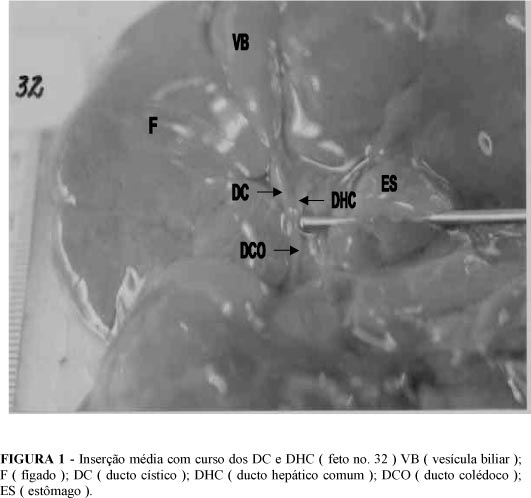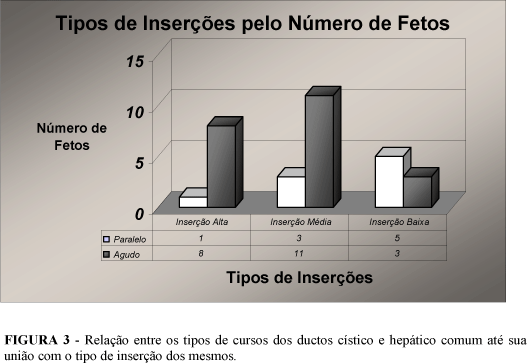PURPOSE: To define and to classify the anatomical variability of the junction between cystic and common hepatic ducts in fetus, it was studied the frequency, itinerary and relationship among them, emphasizing their anastomoses. METHODS: From 1999 to 2000, 33 fetus were dissected. Using pictures to register the cysticohepatic junctions, they were classified as high, medial and low, and the course type in parallel or angular. RESULTS: The cysticohepatic junction was visualized in 93,9% of the fetus, the medial insert in 45,2% of them, the high insert in 29,0% and the low one in 25,8%. Concerning the ductal course, the angular union was present in 71% of the fetus, while the parallel was in 29%. About the length of the ducts, the cystic duct varied from 4 to 6mm, the common hepatic duct from 9 to 13mm and the choledochal duct from 5 to 10 mm. CONCLUSION: Concerning anatomic variations, the medial insertion was prevalent associated with angular course. Mean length of the cystic and common hepatic ducts were 6 and 7mm, respectively. This study demonstrated a significant frequency of cysticohepatic low junctions.
Cystic ductal; Hepatic duct; Anatomy



